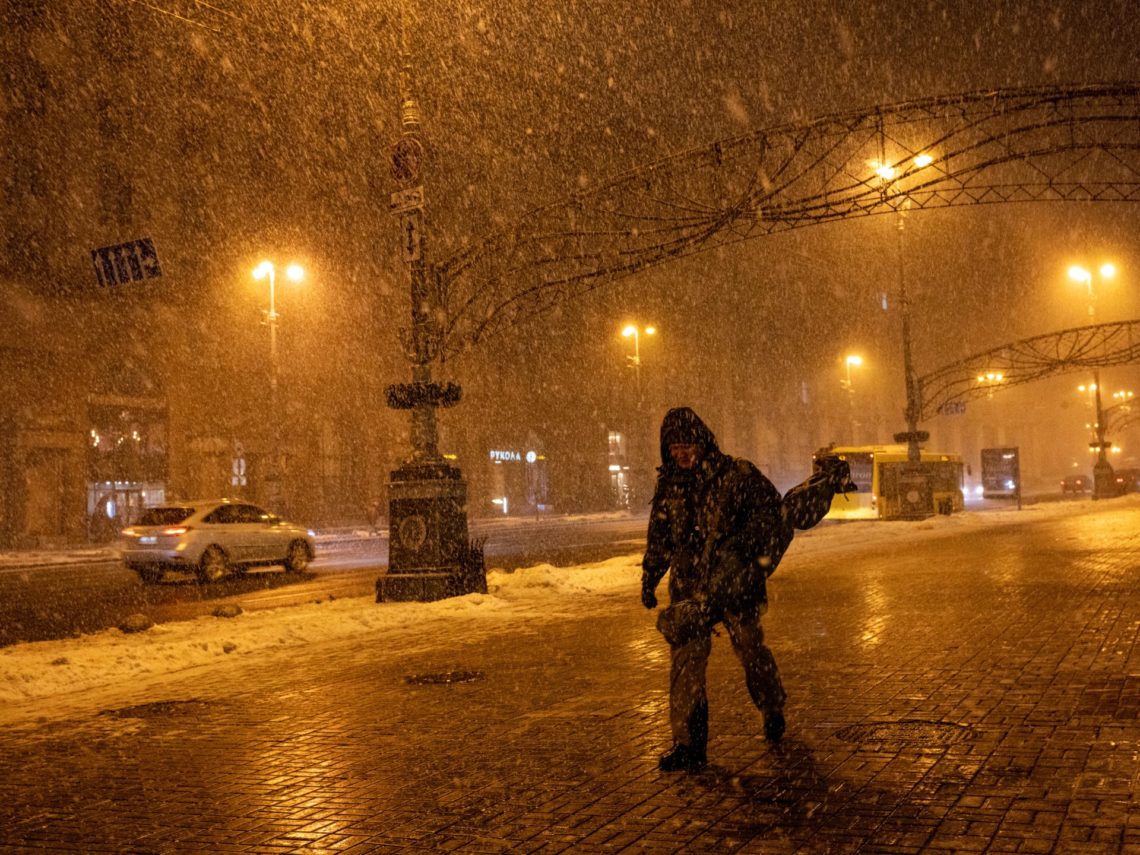As winter approaches, there is much anxiety in Ukraine.
Last month, the so-called Coalition of the Willing, a group of Ukraine’s allies led by France and the United Kingdom, agreed to mobilise significant resources to help Kyiv maintain its supply of electricity and central heating in big urban areas. The effort appears to have had some effect as the heating season began only slightly later than usual, on October 28.
Yet this offers little reassurance that Ukrainian homes will be warm in the months ahead. The Russian army continues to strike the country’s critical infrastructure, aiming to cripple its power grid and gas supplies just as the cold sets in.
“General Winter”, the loyal ally of Russia against Napoleon and Hitler, is serving in this war as well – not only against Ukraine but also against Europe.
Having failed to win on the battlefield or coerce Kyiv through ultimatums, Russian President Vladimir Putin has shifted the war to Ukraine’s energy and logistics systems. At first glance, it looks like a replay of past winters, but the strategy has evolved.
In 2022 and 2023, Russia tried to freeze Ukrainians into surrender. It failed. The spirit of the nation held, and the lights returned. Now Putin’s calculation is different. This time, the aim is not merely to punish Ukraine but to also destabilise Europe through the human consequences of cold and darkness.
When Russia’s full-scale invasion began in late February 2022, millions of Ukrainians fled west by train, car and on foot, creating the largest wave of refugees since World War II. Should the energy system collapse, that wave could return with devastating force. This is the Kremlin’s most cynical design: to weaponise winter.
Despite all the solidarity with Ukraine in the West, another refugee wave would be highly destabilising. With aid budgets stretched thin, Europe would face not only an economic burden but a moral test. It would have to decide between closing borders to desperate civilians escaping the cold and addressing growing public discontent at home.
Today, about five million Ukrainian refugees remain in Europe. Germany and Poland have the biggest populations with 1.2 million and 900,000, respectively. Both have been very welcoming to Ukrainian refugees, but war fatigue is settling in, and public attitudes are shifting.
After Kyiv loosened border exit rules for young men early this year, close to 100,000 Ukrainian males crossed into Poland, many continuing on to Germany. That caused public discontent. An October poll found that 62 percent of Germans are in favour of sending back military-age Ukrainian men, and 66 percent do not want Ukrainians to receive benefits. Maintaining social support for Ukrainian refugees cost Berlin 6 billion euros ($6.9bn) last year, and the new conservative German government keeps talking about tightening budgets.
In Poland, there was also public indignation about the incoming wave of young Ukrainian men fleeing the country. A survey conducted at the end of last year found that 25 percent of Poles saw Ukrainian refugees positively, 30 percent negatively and 41 percent were neutral. Fifty-one percent believed that government support for them is too high. A year later, this negative trend has likely persisted.
In other countries, where Ukrainian refugee populations are smaller, there are also growing negative attitudes. In the Czech Republic, where roughly 380,000 Ukrainians have settled, 60 percent of citizens now believe the country has accepted more refugees than it can manage.
In June, the European Commission extended temporary protection for Ukrainians until March 2027, but the anxiety over another refugee wave is palpable throughout the bloc. In the past two years, EU countries have toughened policies on asylum seekers as a whole. Germany has reintroduced border controls with neighbouring Schengen countries, extending them to 2026. Poland has stopped allowing asylum applications at its border with Belarus.
Putin and his ally Belarusian President Alexander Lukashenko know the strategy of pushing desperate people to the EU’s borders works. They experimented with this kind of hybrid warfare in 2021 when Belarus channelled asylum seekers from the Middle East and Asia towards the Polish border.
At that time, there were thousands of people at those borders, resulting in a humanitarian crisis and deaths. This winter, if Ukraine’s energy sector collapses, hundreds of thousands would head west towards Poland or south towards Romania and Hungary. The situation could easily be aggravated through infiltration of provocateurs or drone activity along borders.
Would Europe be ready?
Last month, Poland’s foreign minister, Radoslaw Sikorski, said his country will help with generators and extra electricity supplies for Ukraine. But how can generators keep warm more than 30 million Ukrainians who have remained at home through a freezing winter?
Putin knows the answer to this question. That is why the Russian army continues to bomb power plants, gas storage and railway junctions: not only to destroy infrastructure but also to push civilians westwards. Panic itself has become a weapon.
This winter, Ukraine may very well find the limits to the solidarity of its “willing” allies.
The views expressed in this article are the author’s own and do not necessarily reflect Al Jazeera’s editorial policy.
The post Russia has a new strategy for winter war in Ukraine appeared first on Al Jazeera.




